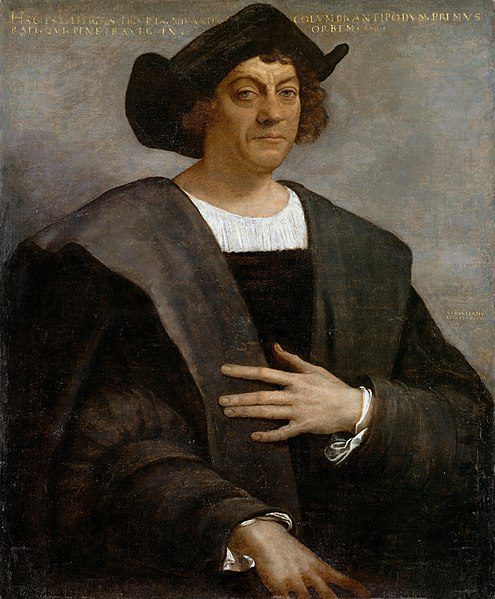
It is well known that Christopher Columbus left Spain in 1492 and sailed westward on three small ships, the Santa María, Niña, and Pinta, in search of a northwest passage to the East Indies. It is perhaps less well known that during the greater part of his expeditions, he suffered from an incapacitating illness that continues to puzzle and fascinate students of medical history.
Columbus was about forty-one years old when he embarked on his first voyage from the little port of Palos de Moguer on August 3, 1492. He sailed towards the Canary Islands, then turned west, and after five unpleasant weeks at sea, he and his crew at last sighted land on October 12, 1492.1,2
They landed on some smaller islands in the Caribbean, then sailed to the larger islands of Cuba and Hispaniola (now Haiti plus the Dominican Republic). They remained in the New World for 225 days and returned to Spain on March 15, 1493. Columbus appears to have remained in good health except for some reference to “sore eyes.”1 But it is recorded in his journal that on the night of February 16, 1493, “the Admiral [Columbus] rested somewhat because, since Wednesday, he had not slept or been able to sleep and hardly had the use of his legs because of always being exposed to the cold and water and because of eating little.”2
The second expedition consisted of seventeen ships with some 1,500 men on board and lasted about three years, from September 25, 1493, to June 11, 1496. Columbus attempted to establish a permanent settlement on Hispaniola, but in April 1494, he and his men were afflicted by an epidemic febrile illness, perhaps malaria, typhoid, or typhus.1,2 However, in September 1494, Columbus fell gravely ill, “lost his sight, memory, and all his other senses” and “lay ill for more than five months… before by God’s favor his health was at last restored.”1,2 This may well have been the first serious episode in his life-long illness.
The third expedition, with three ships and about 200 men, lasted from May 1498 to October 1500 and took Columbus to Trinidad, Venezuela, and the eastern coast of South America. In June 1498 he was suddenly seized by severe pains described as “gout,” affecting his legs and accompanied by fever. He remained sound of mind and diligently continued his exploration, but six weeks after the flare up of his arthritis, his eyes became inflamed and his vision became impaired. The eyes slowly improved by August 1498, but the pain and swelling of the legs persisted.
By the time of his fourth voyage (May 1502 to November 1504) and after his return to Spain, Columbus was incapacitated, edematous from perhaps cardiac failure, and crippled by arthritis. If one were to consider his eye problems as being part of his underlying rheumatological disease, then Reiter’s syndrome, as suggested in 1981,3 would be a good fit, even though he had no urethritis. But chronic rheumatoid arthritis is also known to have ocular manifestations, as might sarcoidosis or Behcet’s syndrome.2 Other diagnoses have occasionally been offered in case Columbus’ eye problems were incidental and unrelated to his main rheumatological disorder. These include rheumatic fever,2 which “licks the joint but bites the heart” and rarely causes long lasting arthritis; pseudo-gout; adult onset Still’s disease; ankylosing spondylitis; osteoarthritis; and the joint complications of syphilis or gonorrhea.2 It is most likely that we will never know the answer.
References
- Fernandez de Ybarra AM. The medical history of Christopher Columbus. JAMA 1894;22;647.
- Hoenig, LJ. The arthritis of Christopher Columbus. Arch Int Med 1992;152: 274.
- Oates JK and Hulse EV. Columbus: was it Reiter’s disease? Lancet 1981;1:95.

Leave a Reply